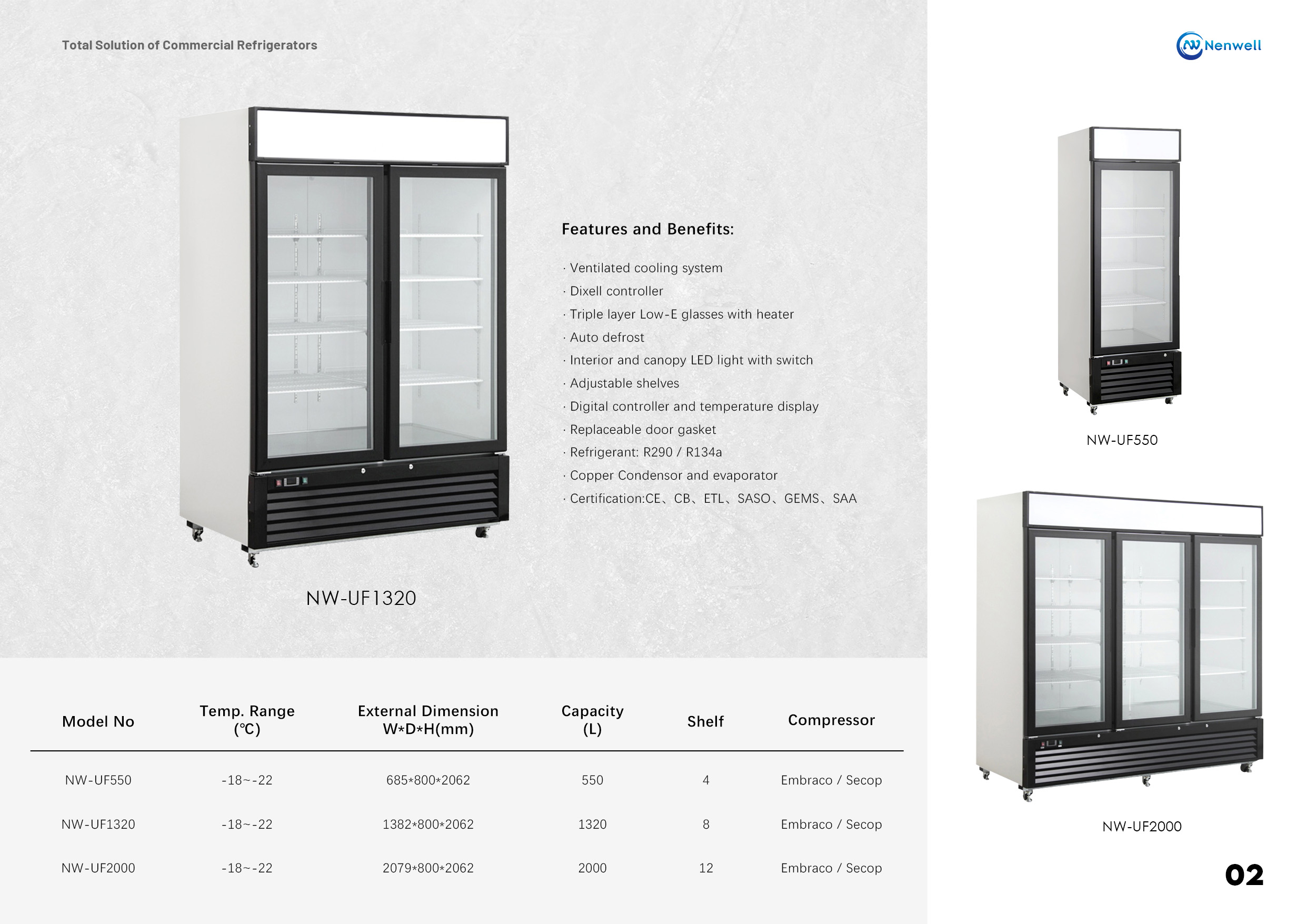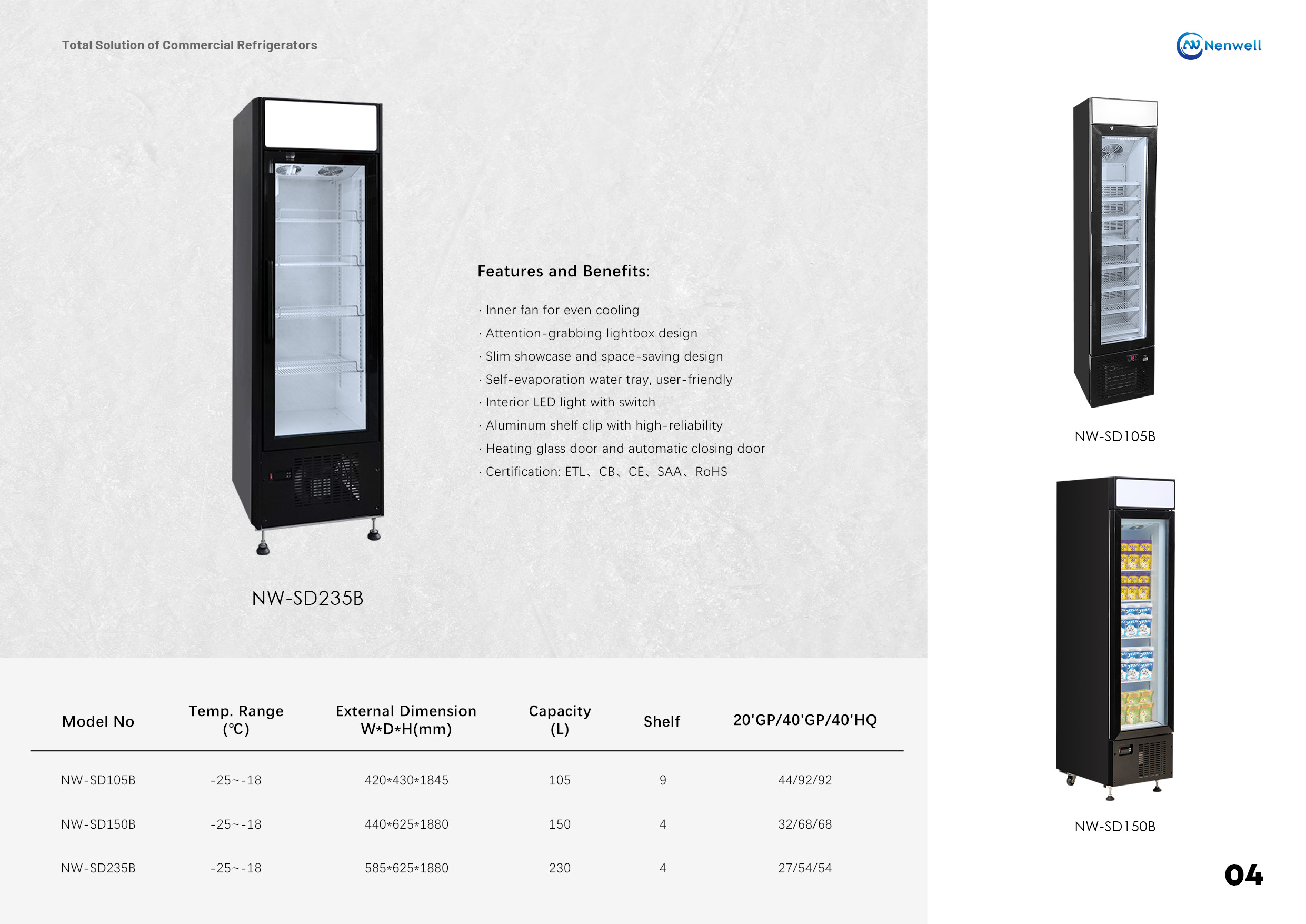In the field of beverage storage and display, European and American brands, with their deep understanding of consumer needs and technological accumulation, have created beverage cooler products that combine functionality and user experience. From fully integrated designs to intelligent control systems, their seven unique features not only lead industry trends but also redefine the standards for beverage preservation.
1. Fully Integrated Flush Design: Aesthetic Harmony with Space
The most distinctive feature of European and American beverage coolers is the fully integrated flush design. Represented by the NW-LG series of under-counter vertical units, these coolers can be installed seamlessly. Thanks to side-venting technology, only a 10cm clearance is required for heat dissipation, allowing the appliance to “blend in” with kitchen or bar settings, perfectly suiting minimalist interior styles. In contrast, the protruding cabinets of regular integrated appliances often disrupt spatial harmony, while the seamless integration of European and American brands has become a staple in high-end residences.
2. Independent Dual-Zone Temperature Control: Precision for Diverse Needs
Independent temperature zoning technology is a core competitive advantage of European and American products. The JennAir beverage cooler features two separate temperature zones: the upper zone has two preset settings suitable for food and beverages, while the lower zone offers four settings precisely tailored to different wine storage requirements. The German brand Faseeny goes even further, achieving a temperature control accuracy of ±0.5°C, with the upper zone set at 12-16°C for wine storage and the lower zone at 18-22°C for cigars and sparkling beverages, with temperature fluctuations not exceeding 0.3°C over 72 hours. This precision addresses the common issues of flavor transfer and ineffective preservation in traditional single-zone coolers.
3. ERP2021 Energy Efficiency Certification: Committing to Environmental Sustainability
European and American brands’ pursuit of energy efficiency far exceeds basic standards, with many products achieving ERP2021 energy efficiency certification. The NW beverage cooler consumes only 0.6 kWh per day, fully meeting the stringent energy consumption regulations of the European Union. Products with the U.S. ENERGY STAR certification are required to have a low-power mode, automatically turning off lighting or adjusting temperature settings to conserve energy, reducing standby power consumption by over 40% compared to regular models.
4. IoT Intelligent Management: Remote Operation and Maintenance
Building on the technological foundation of the world’s first IoT-connected Coca-Cola vending machine in 1982, European and American beverage coolers are commonly equipped with IoT intelligent systems. Many models feature asset tracking modules, enabling remote inventory management and operational monitoring. Commercial models allow users to adjust temperature settings via mobile apps, and automatically send alerts in case of malfunctions, significantly reducing maintenance costs.
5. Nano-Antibacterial Materials: Upholding Hygiene Standards
To ensure food safety, European and American brands extensively use 99% nano-antibacterial materials for inner linings and shelves, effectively inhibiting the growth of Escherichia coli and Staphylococcus aureus. All food-contact components comply with the NSF/ANSI 25-2023 standards, resistant to cleaning agents and pests, maintaining material safety even with frequent cleaning.
6. Ambient Lighting System: Elevating Display Experience
Intelligent ambient lighting adds the finishing touch to European and American beverage coolers. Nenwell’s edge lighting is dimmable, creating various ambient moods. Many models feature zoned LED lighting that automatically illuminates when opened, enhancing the visual appeal by giving beverages a floating effect against glass shelves.
7. Top-Down Airflow Circulation: Optimizing Space Utilization
The innovative top-down airflow circulation system revolutionizes traditional cooling methods. By positioning the cooling chamber at the top, cold air naturally descends, ensuring a temperature difference of less than 1°C throughout the cabinet. This design also allows for a more compact body, saving 20% more space compared to regular models of the same volume. With adjustable wire shelves and pull-out drawers, it can flexibly store 48 cans of 320ml beverages or 14 bottles of wine.
The seven features of European and American beverage coolers embody a deep integration of technological innovation and consumer needs. From the spatial aesthetics of flush designs to the intelligent convenience of IoT systems, each innovation precisely addresses user pain points. As demands for environmental sustainability and intelligence continue to grow, these features will evolve, setting new benchmarks for beverage storage equipment worldwide.
Post time: Oct-07-2025 Views:


